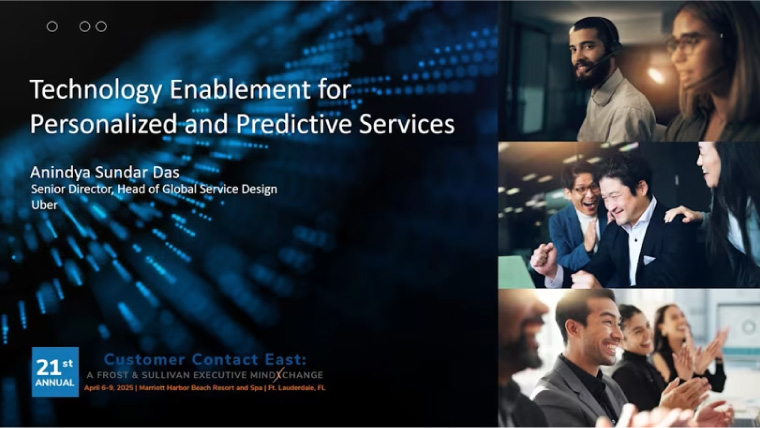As business leaders are contemplating the promise of artificial intelligence (AI) and automation on digital transformation, many are quickly realizing that a customer’s experience is the sum of each moment: good and bad, direct and indirect, automated and manual, digital and face-to-face.
Given the significant impact that notably back-office automation has made on productivity over the last five years, it’s natural for you to gather your management and broadly find AI and robotic process automation (RPA) applicability across operations, finance, sales, service, bricks-and-mortar and beyond. But dealing with the angry mom, the stranded traveler or the confused claimant?
A word of caution: your front is different than your back. Let’s take a restaurant as an example. The front of the restaurant is about making someone feel welcome, delivering the finished product, selling in the moment and offering a patron a clean and fun environment. If you’ve ever walked around to the back of a restaurant, you’d see the reality of all the food going in and the garbage going out.
But doesn’t the real magic happen in the kitchen? The chef would say yes; the host would say no. Both the “front of the house” and “back of the house” of a restaurant are important, but each has a different set of challenges to deliver an amazing experience.
Why the differences
The same is true today for customer-facing automation used to drive digital self-service and serve employees in the contact centre. These tools enable agents to find answers, solve problems and complete sales quickly, accurately and to the customers’ satisfaction. But the back office handles the processing of customers’ issues, like inquiry forms, service and sales orders and documentation, like loan and mortgage applications that takes longer and are more involved to handle.
Typically integrating a few systems to solve a workflow or automating a task in the back-office won’t make your agents happier or more productive, just like a new oven or dishwasher will not help the waitstaff. The same is true for poorly designed virtual assistants (VAs), (euphemistically referred to as chatbots), which the equivalent in restaurants may be the table or mobile point of sale terminals. These VAs often plague customer journeys with dead-ends and certainly NOT a path to front-office employees. Now isn’t the time to open the back-office RPA toolkit and automate like before.
There are two main reasons why your front is different than your back. Firstly, at Jacada we often see a dozen or more systems for integration while engaging in a back-office project. But if you have 10, 20, 30, even 40 running applications on a contact centre agent desktop, you’re not alone. There is plenty of digital debt on the desktop of your average agent, and most applications can’t be or aren’t ready for replacement. The same is true for VAs: dozens of systems are often required to make a great experience. But the time for attended RPA to step in and collaborate is now! Yes now, and not after we migrate to “insert new CRM vendor here” or “rip out that old tool Larry made last year.” Digital debt will live on in some cases and because the front is different than the back, look to use well-designed contact center automation to drive quick wins and increase agent engagement.
Second, back-office systems rarely speak, truly speak. Customers and agents speak all day long. Creating automation with conversational flow, grounded on natural language processing (NLP), is often more than what traditional RPA can handle. Instead, delight customers by creating good conversations in digital self-service that will transition to an agent seamlessly. Often these systems cannot provide the emotion needed for the front-office, like empathy. In addition, customers interacting with the VAs expect faster transaction handling, satisfaction via one step resolution and most importantly, a pleasant customer service experience.
Connecting the front and back
The human body will not work unless the front and back function as one. The same with business operations, whether restaurants or contact centres. They must be seamlessly connected to provide an excellent customer experience. Do so and your customers and your staff will thank you.
Regardless of your digital debt, keep your customer dialogues conversational, guide your agents and create seamless self-service journeys. Savvy contact centres are reaping the benefits of AI and automation tools designed specifically for them to transform complex desktop environments into intelligent solutions for their employees. Remember that traditional back-office RPA is powerful; however, attended RPA in the front-office should provide design-once, end-to-end and low-code for both agent-assisted interactions and self-service.
So, the next time you visit your favourite restaurant, think of all the automation that makes the entire restaurant run smoothly. And just like a restaurant, you will have systems and processes that span the front and back of your organization. Always keep your customer and agent-facing experiences a high priority. These experiences are the faces and “front doors of your brand”. Protect them. Serve them up well. Deliver them on a silver platter if you need to. Because in many cases, it’s our people who save us when the fish is bad, the wine is too warm, or the table is wobbly. Remember to tip your waiter and always remember that your front is different than your back.


